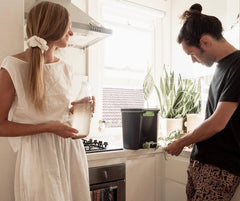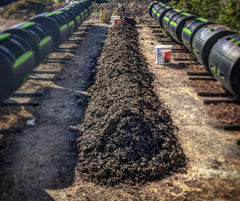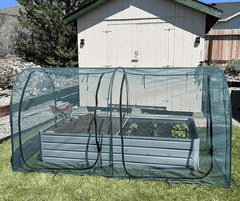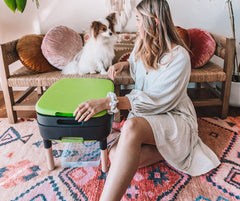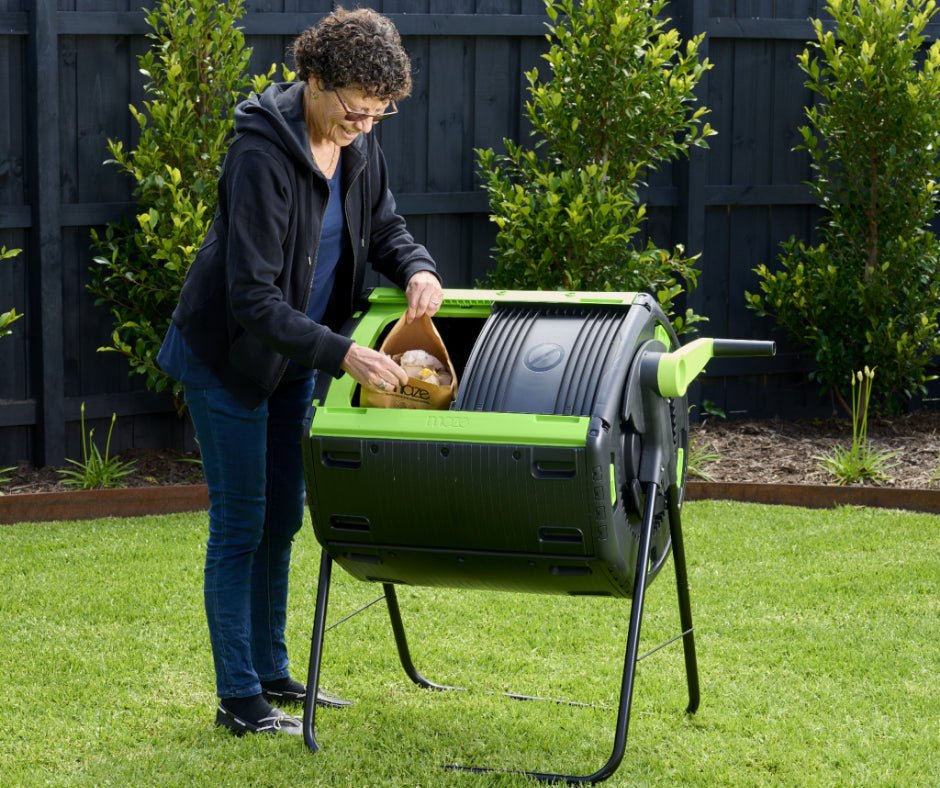
Step-by-Step: How to Compost with a Maze Tumbler
Thinking about starting your own home compost but not sure where to begin?
Composting is a fantastic way to cut down your household waste, create nutrient-rich food for your garden, and help the planet at the same time. With a Maze compost tumbler, it’s never been easier, even if you’re a beginner.
In this guide, we’ll show you exactly how to use your Maze tumbler, share simple tips, answer your questions, and help you get the most from every food scrap.
Remember: today’s scraps, tomorrow’s garden!
Why Choose the Maze Compost Tumbler?
Maze is Australia’s leader in composting and sustainable gardening solutions, offering products that make it easy for anyone to compost at home. The signature 245L and 180L compost tumbler stands out for its:
- Innovative design: Easy-turning mechanism for effortless aeration.
- Sturdy materials: Built for the Aussie climate - UV protected, durable and long-lasting.
- Practical size: Perfect for all gardens - large or small.
We are committed to simple, sustainable living.
Check out the full range of compost tumblers and Kitchen composting products --> Here

What Can I Compost in a Maze Tumbler?
One of the most common questions from new composters is: what can I compost? Here’s a quick guide to what you can add to your Maze tumbler:
Green Materials (Nitrogen-rich):
- Vegetable scraps
- Fruit peels and cores
- Coffee grounds
- Tea leaves (loose or bags without plastic)
- Fresh grass clippings
Brown Materials (Carbon-rich):
- Dry leaves
- Cardboard and paper (non-glossy)
- Egg cartons
- Sawdust (from untreated wood)
- Straw
Avoid putting these in your Maze tumbler:
- Meat, dairy or oily foods
- Large branches or woody items
- Pet faeces
- Glossy paper, plastics, or synthetic materials
Blending a good mix of greens and browns (roughly 50:50) is the secret to sweet-smelling, crumbly compost. You can find an extensive list here - 'What Can You Compost'
Step-by-Step Composting with Your Maze Tumbler
Step 1: Set Up Your Maze Tumbler
- Place your Maze compost tumbler on flat, stable ground, ideally in a sunny spot.
- Make sure the sliding access doors and turning mechanism are firmly attached.
- Keep it easily accessible, so you’ll use it regularly.
Step 2: Start Filling
Begin by adding a balanced mix of green and brown materials. Each time you add kitchen scraps (greens), top up with some paper, leaves or straw (browns).
Step 3: Turn Regularly
The Maze tumbler is designed for easy turning. Rotate / Turn every 2–3 days. This mixes the compost, aerates it, and speeds up the decomposition process.
Easy Composting Tip: Don’t overload! Smaller, regular additions create better compost than dumping in a big pile all at once.
Step 4: Maintain Moisture
Your compost should be as damp as a wrung-out sponge. If it’s too dry, add more greens or sprinkle with a little water. If it’s too wet, add more browns and turn it more often.
Step 5: Wait and Harvest
Depending on conditions, compost in your tumbler is usually ready in 8–12 weeks. When it’s dark, crumbly, and has a rich earthy smell, it’s good to go! Use it to feed your garden, pot plants, or even your outdoor Maze greenhouse.
Still wondering what to do AFTER setting up your Tumbler?
It’s normal to open your newly set-up Maze compost tumbler and wonder, "Now what?" Many people, this is their first time composting and aren’t sure if they should just toss in scraps or if there’s something else they need to do first.
Here’s the simplest answer: To kick off composting, start by adding a handful or two of finished compost (if you have some), or a scoop or two of healthy garden soil. This introduces beneficial microbes that get the whole composting system humming along.
If you have access to some sugar cane mulch, straw, or shredded dry leaves - those are perfect to layer in as well. The secret is to avoid dumping in just kitchen scraps and then waiting. Instead, make your first layer a mix of "browns" (like dried leaves or mulch) and a little soil or compost.
Then you can begin adding your food scraps in small amounts, always following up with more browns. This way, you’ll create an active, balanced compost right from day one.
Beginner Compost Troubleshooting
- Compost is too wet and smelly: Add more dry browns (like shredded paper or leaves) and turn more frequently.
- Compost too dry and not breaking down: Add more greens and a little water.
- Compost not heating up: Mix in more green material and make sure you’re turning it often.
- Presence of ants or flies: The compost mix is likely too dry or has exposed food. Add moisture, cover new additions with browns, and turn regularly.
Easy Composting Tips
- Chop large pieces into small bits for quicker breakdown.
- Keep a kitchen caddy (like the Maze Compost Caddy) handy to collect scraps and make regular trips to your tumbler.
- Never add anything that’s not biodegradable or safe for compost (no plastics, treated wood, or chemical-laden waste).
FAQ
What can I put in my Maze compost tumbler?
You can add most fruit and vegetable scraps, coffee grounds, tea leaves, egg shells, garden clippings, shredded paper and cardboard, and leaves. Avoid meat, dairy, oily foods, and anything synthetic. You can find a more robust list here
How often should I turn my compost tumbler for best results?
For most Maze tumblers, turning 2–3 times EVERY 2–3 days gives the best results. This keeps your compost aerated and speeds up the breakdown.
Why isn’t my compost breaking down, and what should I do?
There may be too much dry material, not enough moisture, or not enough aeration. Try adding more greens, sprinkling with a bit of water, and turning more often. Check for balance - if it smells bad or stays too wet, add more browns instead.
Sustainable Gardening with Maze
Composting isn’t just about waste, it's about creating a circular garden system at home.
With Maze, you’re not only making compost, but you’re giving back to the earth. Don’t forget: today’s scraps, tomorrow’s garden. Every bit of effort counts towards a greener, healthier future.
Starting your home compost journey is simple and rewarding with a compost tumbler.
With just a few mindful steps, you’ll be reducing waste, building healthy soil, and growing a better garden.
Got more questions? Join our Facebook compost community


